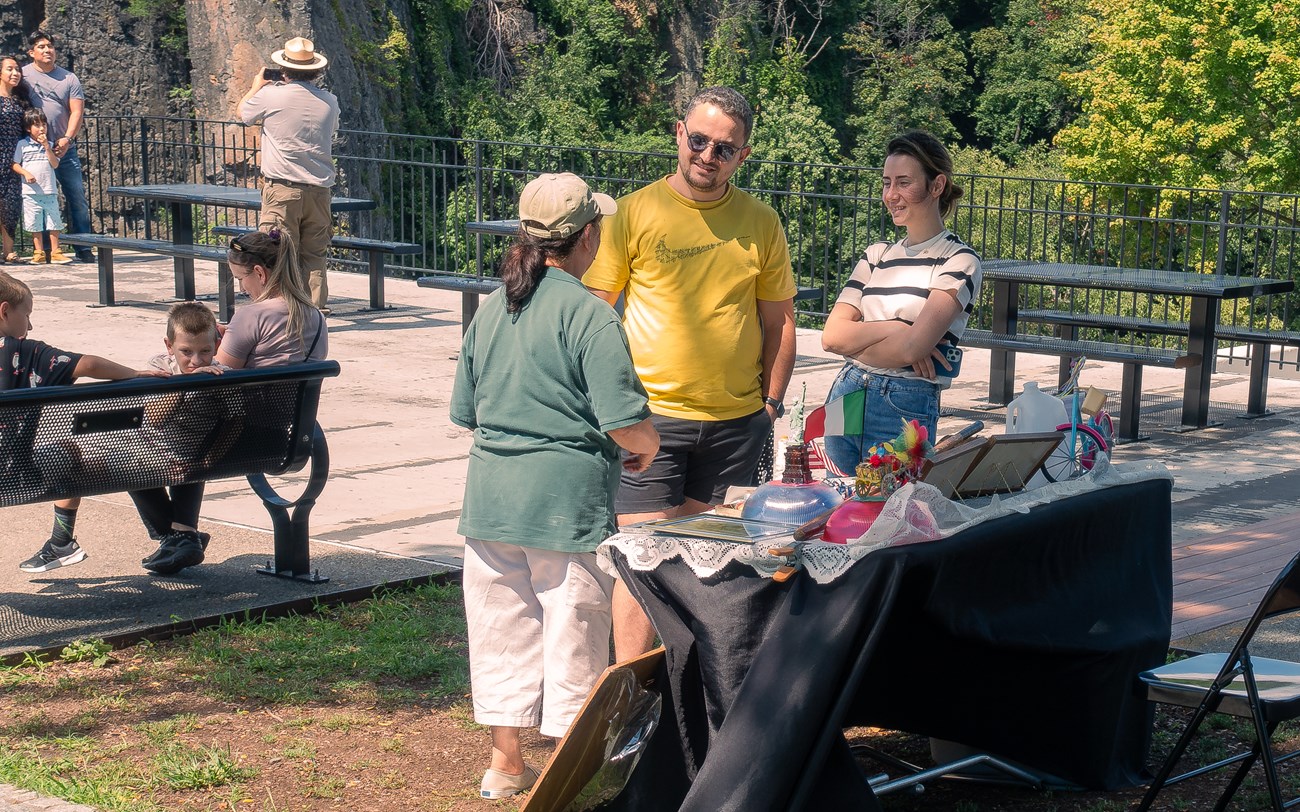
VIP Terry McKenna Everyone Has A Story To TellHistory is more than just names, dates, places, and events. History includes the detailed daily lives of the people you see walking down the street. It includes the events that make up the life of a community. Oral histories give us the opportunity to discover what a community's life was like from the people who lived it. They are an authentic record that go well beyond the pages of a textbook. Through stories, experiences, and various anecdotes, historians can begin to construct a social history of an era. In this way, oral history is a tool for making the past important and relevant to future generations. 
NPS Oral History ProjectThe goal of the Oral History Project at Paterson Great Falls National Historical Park is to connect with the people who lived and worked in and around the City of Paterson. These represent an often-untold historical record that will paint a richer picture of America's first planned industrial city. The stories might be accounts of factory workers or owners. They may be stories from labor leaders, activists, or politicians. They may be memories of adults recounting the history of the city through the eyes of their younger selves. The narratives we collect will allow us to share the great history of Paterson, New Jersey, with our visitors. The stories below were recorded through the Oral History Project and collected by historians, National Park Service Rangers and Interns. Oral HistoriesClick on the names of these Patersonians to access each interview and transcribed recordings:Former Mayor Lawrence "Pat" KramerLawrence Francis "Pat" Kramer served as Paterson's mayor for two sets of consecutive terms, 1967-1972 and 1975-1982. In his oral history interview, Kramer talks further about his love of the city, its features, and its role as the nation's first industrial center. Former Mayor Tom RooneyThomas Rooney served Paterson for decades, first as mayor for eighteen months, and then as Sixth Ward councilman for 28 years. Rooney was also instrumental in helping establish the Paterson Great Falls National Historical Park, developing and presenting a proposal and building a model. Arthur GuarinoArt lived on Totowa Avenue in a largely Italian-American neighborhood. Surrounded by Italians, Art grew up speaking Italian. With the help of Americanized cousins and cartoon programs, he eventually got the hang of speaking English, and recalls his experiences growing up in Paterson, including Philippe Petit walk a tight rope across the Great Falls. Betty Van Houten MarchittiBetty was born at General Hospital in Paterson in 1931, and lived here until 1966 when she and her husband, John, moved to nearby Totowa. She remembers visits to the Great Falls and picnicking with friends. Bonnie Wetter RossTo Bonnie Wetter Ross, Paterson was a wonderful place to grow up. She was born in 1947 to Irving Wetter, a kosher butcher in Paterson, and his wife Mollie. Bonnie fondly talks about shopping downtown, taking a bus and getting off between Fabian's and where City Hall used to be. Dolores Davidson MostBorn in 1929, Dolores Davidson Most has been a devoted Patersonian. She bears the distinction of being the last surviving member of a female police force from the 1950s, a time when police academies did not exist and folks looked down their noses at divorced women. Erik SoldwedelReverend Erik Soldwedel, born in June 1958, has both family and religious roots in Paterson. Since 2016, Erik has been serving as interim clergy at St. Paul's Episcopal Church in Paterson. Frank BlessoFrancis Blesso was twenty-nine years old when a job called him from New Britain Connecticut to Paterson. That was in 1967 and he make Paterson his home. Blesso came as a civil engineer to help redevelop the city Paterson. Helene MillerHelene Arbus Miller was born at Barnert Hospital in Paterson in 1933 into a Jewish family of silk weavers from Lodz, Poland. The family owned a mill, New Deal Weaving Company, at 3 Mill Street. Irene SterlingSussex County native Irene Sterling first fell in love with Paterson when attending an urban theology conference there with her fiancé and Drew University theology student, Howard Sterling. She moved to Paterson and became involved in various nonprofit organizations, including the Great Falls Development Corporation. Jimmy RichardsonIn this series of three interviews, Paterson "Renaissance Man" Jimmy Richardson discusses the history of the city's African-American churches, African-American newspapers, involvement (or rather lack of involvement) in the silk and textile industry, the Negro League Baseball League and Hinchliffe Stadium, and historical preservation. Maria Mazziotti GillanMaria Mazziotti is a Paterson poet and educator. Maria specifically chose Paterson as the home of the Poetry Center, inspired by William Carlos Williams, Allen Ginsberg, and her own upbringing. Roberta FarberMany years ago, native Patersonian Roberta Perez Farber was asked to write a guest column for the newspaper. She wrote about a time in the future, maybe 20-50 years ahead, about a female mayor of Paterson and the revitalization of the city's historic district and the Great Falls. Roni Seibel LiebowitzRoni Seibel Liebowitz, a genealogist, founded Jewish Roots in Paterson on Facebook. It was a way, she says, to reconnect and she marvels at the friendship and camaraderie that continue even after many years. |
Last updated: June 9, 2025
